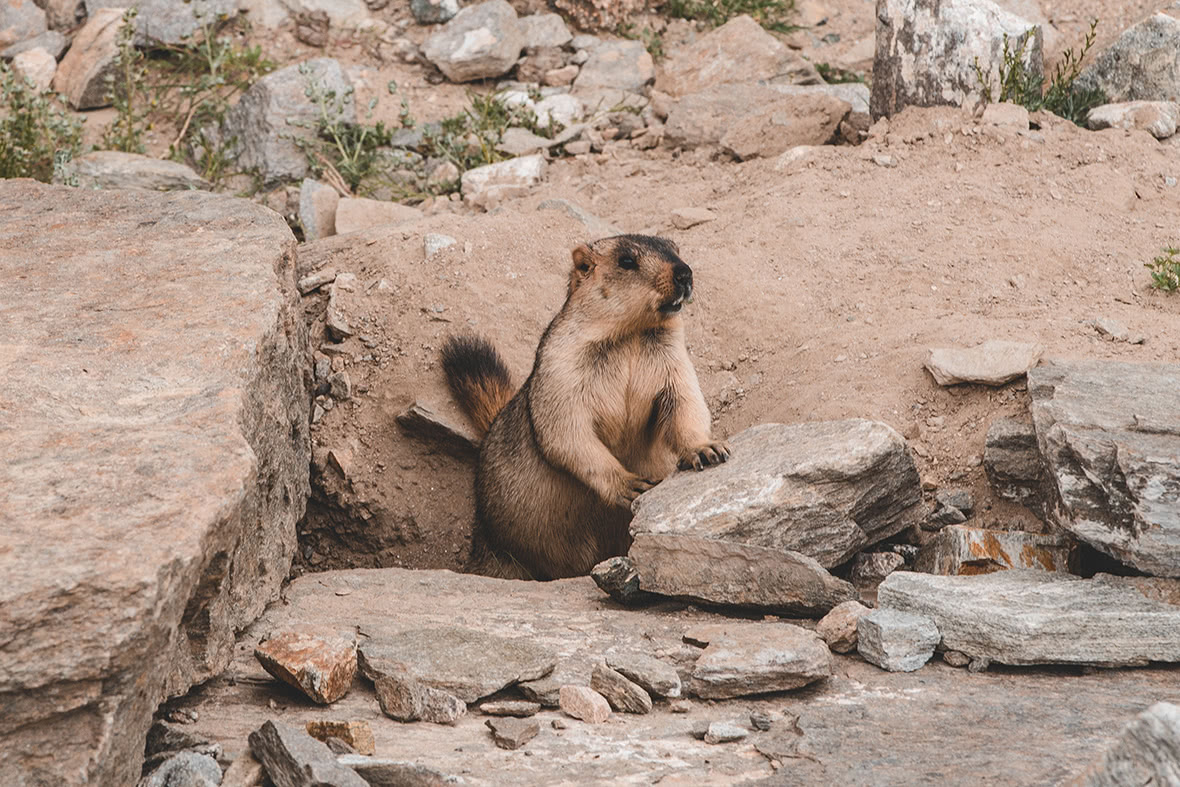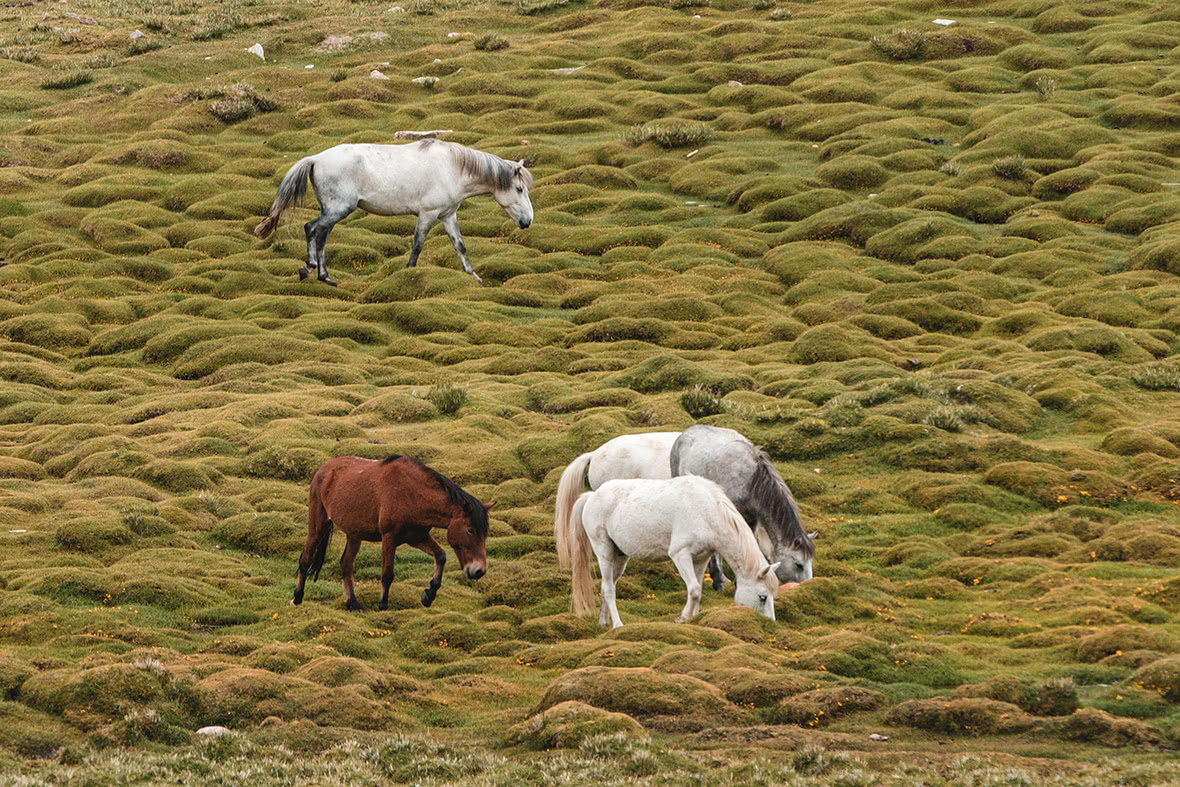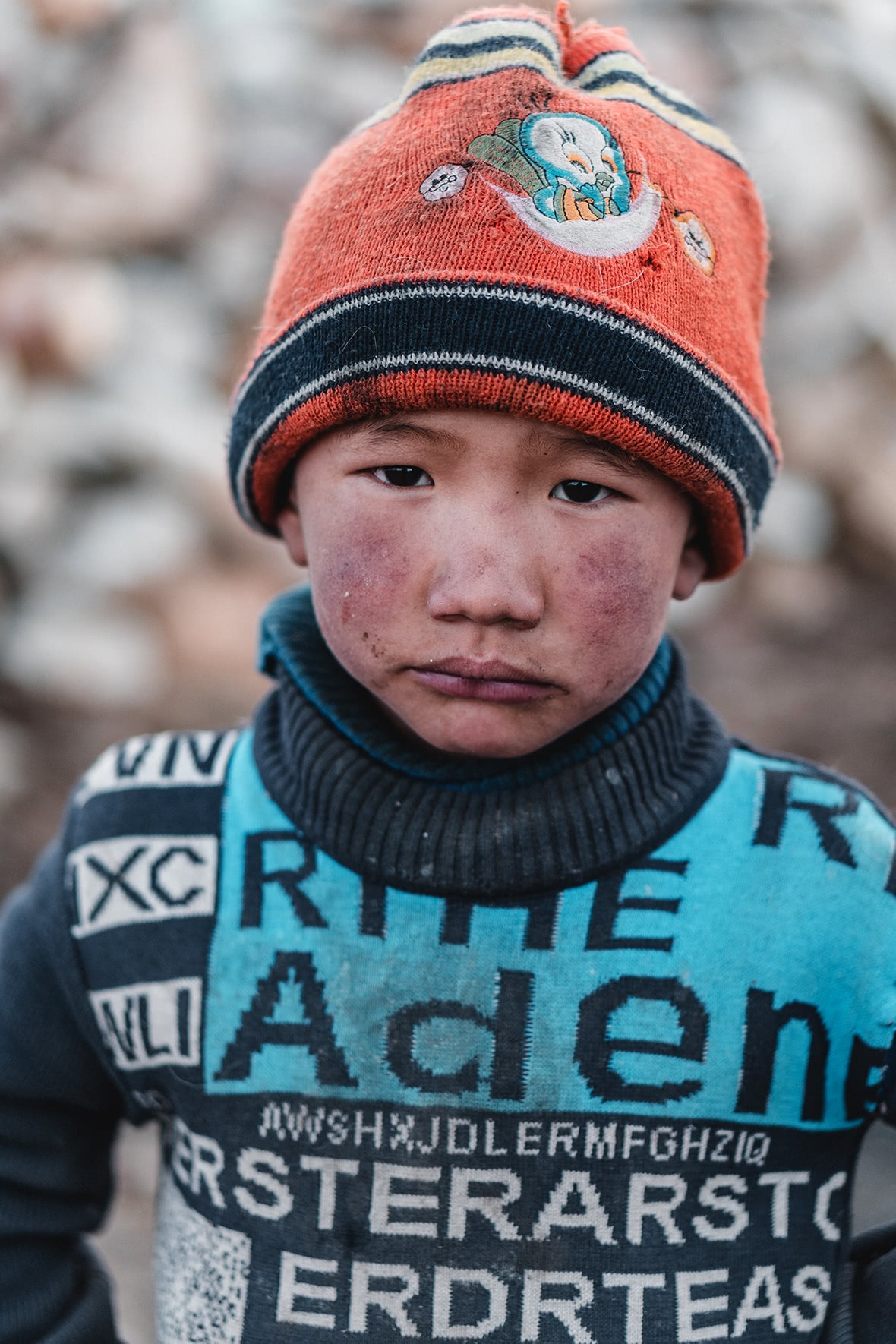
The name of Tso Moriri is simple: tso, meaning lake, and ri, meaning mountain. But legend has it that a Bhuddhist nun (chomo) from nearby Korzok was searching for her father’s yak, shouting “ri, ri” to call for the beast when the yak broke the ice and both drowned, hence Tso Moriri. The story varies and is likely a product of embellishment after the name, but the message is clear: Tso Moriri is a tough landscape.
My August drive there took 10 hours after seeing the Dards of the Aryan Valley. I followed the Indus River throughout my journey and along that rough, dry patchwork landscape are a great many vertiginous peaks of note, but one element particular to my journey was that of the marmots, a type of large, pudgy ground squirrel.
These high, arid regions of Ladakh may be difficult for some travelers, but the isolation and rugged terrain has made an unlikely outpost for animals. I had tried on previous trips to photograph the marmots of Mongolia, but they had been too skittish. These, though, seemed relatively happy to pose. And they weren’t the only ones. Throughout the journey I would see smatterings of Himalayan wildlife, including the Tibetan sheep and very rare blue sheep. Fewer still are the Tibetan wolf and snow leopard that feed on the rare pickings of the Changthang Plateau.

Found at nearly 15,000 feet above sea level, the altitude and temperature of Tso Moriri can be trying, even when I visited in August, with a dry cold that gets into your bones. I had traveled on this particular journey to areas more than 18,000 feet, but Tso Moriri would require an overnight.
This high up the wind whips fast and loud. Clouds whisk through the peaks as if they’re being filmed under a time lapse, a moving, alien portrait on the roof of the planet.
This is not an easy place to stay, but I found relative comfort with a roof over my head — as opposed to the accompanying tents. The carefree feel of a tented camp is all well and good, but in that biting cold and rough wind, I opted for four walls.

I spent a restless night of sleep — as many do at 15,000 feet, and Tso Moriri can’t be recommended for comfort. At this elevation, a flushable toilet, electricity for a few hours, and a hot shower from a bucket are five-star luxuries.
That said, the scenery made up for the inhospitable climate and thin air. Prayer flags, wildlife, local culture — arriving at the lake I spent a desultory few hours wandering around the lake, filming and becoming acquainted with its odd, stark beauty. The lake is often frozen over in winter, but on my journey the waters were a still blueish gray.

Found 250 kilometers east of Leh, a perennial choice for adventure travelers, and home to a delicate ecosystem, the alkaline waters here are fed by small springs and glacial melt, bringing life to the Tso Moriri Wetland Conservation Reserve.
Life here may be a little rough on the tourist and the snow leopard, but the Ladakhi people found around Tso Moriri lake live quite happily in goatskin and yak hair tents, concentrating on what husbandry can be gleaned from the tough mountain terrain. The “changpas”, meaning the nomadic migratory herders of the region, raise yak, sheep, horses, and goats. They often graze on rough terrain dotted with the effects of permafrost.
We spent an evening watching the bucolic scenes of a family collecting goats and kids to pen them up for the evening as the sun set on the roof of the world. The women used large looms to make fabric from the fur harvested from their animals.
When the sun goes down, Tso Moriri stops. All that life of the Himalayas gives way to stygian nights that are black, cold, and, in this case, featureless. Travelers huddle together for food and conversation and then try to catch some sleep through the freezing night and nagging altitude sickness.

The climate and altitude are not enough to keep travelers away from this lake in the clouds. It is especially popular with motorcyclists who travel here in groups — sometimes by the dozen — through the treacherous roads leading to Tso Moriri. Due to its status as a protected area and wetland, the lake has no infrastructure for tourists, and on an endless Himalayan expanse, it’s hard to imagine what man-made feature could possibly improve it.
A few dozen kilometers from Jammu and Kashmir’s border with China, a near inaccessible alkaline sea, and a high-altitude travel frontier — Tso Moriri’s climate and altitude may be cruel, but it is that ruggedness that has made this place so magnificent.




